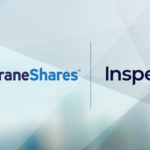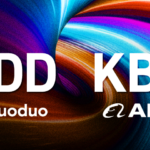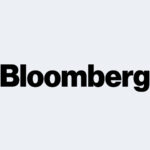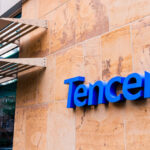China Internet Back to Outperformance in January

January Market Key Highlight
In January, we witnessed a sharp bond sell-off led by higher real yields, reflecting investors' concerns over a more hawkish Fed; both U.S. and global equities experienced a pullback in light of this development. At the Federal Open Market Committee (FOMC) meeting, Chair Powell emphasized the "economy is quite different, it's stronger, inflation is higher, and the labor market is much, much stronger than it was." He then repeatedly stressed the Committee would need to be "nimble" concerning the course of policy and suggested there was "quite a bit of room to raise rates." Markets interpreted this as a signal for the Fed to halt its net-asset-purchases and start raising rates in March potentially.
Thus far this year, the CSI Overseas China Internet Index outperformed MSCI ACWI by 500 basis points (bps) S&P500 Index by 530bps, and Nasdaq by 910bps, a reverse trend from 2021's performance league table (see table below).
Pro-Growth Allocation in China
The increasingly hawkish signals from developed market central banks put upward pressure on bond yields and seemingly caused a growth-to-value rotation in equities. However, we see both technical analysis and fundamental conditions supporting the view to stay invested in China's growth stocks.
The unprecedented level of regulations introduced in 2021 created market volatility. Though the intention was to remove potential risks in the system, investors were surprised by the intensity and scale at which the regulations were announced and implemented. We saw aggressive revising down on earnings and re-pricing on valuations for China Internet companies. On average, the sector is currently trading at 18x earnings compared to 32x for its U.S. counterpart1. The pullback created an attractive entry point for long-term investors from a fundamental perspective.
We expect policies to stay accommodative in supporting economic growth and the transition to green investment. We believe that policymakers in China will shift the focus from de-risking towards supporting development in 2022. We have already seen the People’s Bank of China (PBoC) put this in action by cutting rates and re-emphasizing the broad economy's support in their January press conference.
More evidence led us to believe that we have progressed to the regulation implementation phase. The focus is now on how companies can achieve goals set by the government in dealing with carbon emissions, such as: promoting future mobility, opening up the financial market, and supporting China technology companies to become world leaders, which are contributors to sustainable long-term growth for China.
The technical analysis shows a supportive outcome to our fundamental view. The historical pattern between GDP growth and outperformance of Equity-style shows 1) during an accelerating GDP growth period, Value stocks tend to outperform growth. 2) If GDP growth starts to decelerate, the dispersion is less noticeable in finding a settled range. However, 3) if GDP growth is normalized in a relatively lower but stabilized range, growth stocks tend to outperform. The same trend was also observed in the United States.
Given our macro expectation is that China will stabilize its GDP growth at around 5% from 2022, together with supportive domestic liquidity, that is a combination that could bode well for Growth premium expansion. That gives us the comfort to prefer growth-oriented equity in China for 2022.

We also studied the relative performance of the latest quarter during the prior tightening cycles for the last 13 years between a few U.S. indices and the CSI Overseas China Internet Index. And we found China's Internet sector outperformed Nasdaq, S&P500, and the U.S. Growth index for 7 of the last nine rate-hike cycles since 2008.
With the exception of the scenarios in the 1H 2018, where China Internet stocks underperformed, other indices were mainly due to a rise in geopolitical tensions which surprised global investors. The Goldman Sachs index shows that US-China geopolitical tensions rose sharply from 0 to over 60% from January to June 2018. The steepness of the rise and scale of the change was reflected in the level of the market pullback. We don't expect this to repeat again, particularly at the current elevated level, which leads us to believe the broad tensions are now priced in.
Each cycle is embedded with its macro conditions. After removing the periods impacted by geopolitical uncertainties, China Internet stocks in aggregate outperformed each index by over 50-60% during all the tightening cycles.


The market expects China to expand fiscal spending and the PBoC to inject liquidity this year, opposite the majority of the developed market central banks tightening. So, the pro-growth policy, attractive valuations, and the potential performance catch-up from last year could catalyze China Internet stocks to outperform.
Global Indices Returns at a Glance (as of Jan-31-2022):

Follow the links for the most recent standard performance: KWEB, KGRN, KBUY, KURE, KESG, KSTR, KTEC, KFYP, KFVG, KBA, KALL, KBND, OBOR, KARS, KEMQ, KMED, KEMX, KRBN, KEUA, KCCA, KLCD, KSCD, KVLE.
Index Inception Dates: KWEB - 9/10/2011, KGRN - 8/23/2017, KBUY - 11/30/2020, KURE - 10/25/2017, KESG - 11/8/2019, KSTR - 7/23/2020, KTEC - 7/20/2020, KFYP - 4/30/2013, KFVG - 10/31/2020, KBA - 8/20/2021, KALL - 6/26/2014, KBND - 7/1/2015, OBOR - 5/31/2017, KARS - 5/21/2021, KEMQ - 10/11/2017, KMED - 5/15/2013, KEMX - 3/9/2017, KRBN - 7/29/2019, KEUA - 8/23/2021, KCCA - 10/5/2021, KLCD - 4/7/2019, KSCD - 4/7/2019, KVLE - 10/31/2020
Index returns are for illustrative purposes only and do not represent actual fund performance. Indexes are unmanaged and one cannot directly invest in an index.
Citations
- Data from FactSet as of 12/31/2021.
Index Definitions
Nasdaq: a stock market index that includes almost all stocks listed on the Nasdaq stock exchange.
MSCI ACWI: captures large and mid-cap representation across 23 Developed Markets (DM) and 23 Emerging Markets (EM) countries.
The S&P 500: is an American stock market index based on the market capitalizations of 500 large companies having common stock listed on the NYSE or NASDAQ.
MSCI EAFE: is an equity index that captures large and mid-cap representation across 21 Developed Markets countries
around the world, excluding the US and Canada.
MSCI EM: captures large and mid-cap representation across 25 Emerging Markets (EM) countries.
MSCI USA Growth: captures large and mid cap securities exhibiting overall growth style characteristics in the US.
Goldman Sachs: assesses not only trade risks, but also those linked to technology, capital markets, and geopolitics.
The CSI Overseas China Internet: selects overseas-listed Chinese Internet companies as the index constituents; the index is weighted by free-float market cap.
MSCI China IMI Environment 10/40: designed to measure the performance of securities with the country of classification as China comprising of large, mid, and small market cap segments.
CICC China Consumer Leaders: consists of the investable universe of publicly traded China-based companies whose primary business or businesses are in the consumption-related industries such as home appliance, food & beverage, apparel & clothing, hotels, restaurants, and duty-free goods.
MSCI China A Net Return USD: captures large and mid-cap representation across China A‐shares, B‐shares, H‐shares, Red‐chips, P‐ chips, and foreign listings (e.g. ADRs).
Hang Seng Tech: represents the 30 largest technology companies listed in Hong Kong that have high business exposure to technology themes and pass the index's screening criteria.
CSI CICC Select 100: is designed to select 100 A-Shares companies with high and stable ROEs, high dividend yields, and high earnings growth rates amongst a stock pool which is comprised of the A-Shares companies with higher size, liquidity, and operating revenue in each Industry Group according to CSI Industry Classification Standard.
CICC China 5G and Semiconductor Leaders: designed to track the performance of companies engaged in the 5G and semiconductor-related businesses, including 5G equipment, semiconductors, electronic components, and big data centers.
MSCI China A 50 Connect: seeks to represent the performance of the top 50 large-cap China A-shares using a sector-neutral approach.
MSCI China All Shares: captures large and mid-cap representation across China A‐shares, B‐shares, H‐shares, Red‐
chips, P‐chips, and foreign listings (e.g. ADRs).
MSCI China All Shares Healthcare 10/40 Net Return USD: captures large and mid-cap representation across China A‐shares, B‐shares, H‐shares, Red‐chips, P‐ chips, and foreign listings (e.g. ADRs).
Bloomberg China Inclusion Focused Bond: designed to track the performance of China’s onshore renminbi-denominated government and high-quality corporate bond market.
Global China Infrastructure Exposure: designed to represent the performance of listed companies within Developed, Emerging, and Frontier markets with high revenue exposure to China infrastructure development from within a specified set of industries relevant to what has become known as the ‘One Belt, One Road’ (“OBOR”) investment program and development strategy promoted by China.
Bloomberg Electric Vehicles: designed to track the performance of companies engaged in the production of electric vehicles and/or their components, or engaged in other initiatives that may change the future of mobility.
Solactive Emerging Markets Consumer Technology: selects companies from 26 eligible countries within emerging markets whose primary business or businesses are internet retail, internet software/services, purchase, payment processing, or software for internet and E-Commerce transact.
Solactive Emerging Markets Healthcare: seeks to track the equity market performance of companies engaged in the health care sector in various emerging markets.
MSCI Emerging Markets ex China: tracks large-cap and mid-cap companies within emerging market countries, excluding China.
IHS Markit’s Global Carbon: offers broad coverage of cap-and-trade carbon allowances by tracking the most traded carbon credit futures contracts.
IHS Markit Carbon EUA: tracks the most traded EUA futures contracts.
IHS Markit Carbon CCA: tracks the most traded CCA futures contracts.
Russell 1000 Dividend Select Equal Weight: takes a smart beta approach to investing in US Large Cap companies.
Russell 2000 Dividend Select Equal Weight: takes a smart beta approach to investing in US Small Cap companies.
3D/L Value Line® Dynamic Core Equity: introduces a market adaptive approach to investing in US large-cap companies.
MSCI China ESG Leaders 10/40 NET USD: aims to provide exposure to companies with high Environmental, Social and
Governance (ESG) performance relative to their sector peers.
SSE Science and Technology Innovation Board 50: is comprised of the 50 largest securities listed on SSE Science and Technology Innovation Board (STAR Market) as determined by the highest market capitalization and liquidity.
r-ks-sei

















